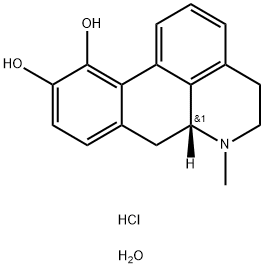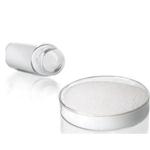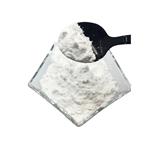Apomorphine (41372-20-7) is an archetypal dopamine pan-receptor agonist. Displays anti-Parkinsons activity in vivo.1 Protects against MPTP-induced neurotoxicity in a mouse mode1,2 In clinical use for Parkinson’s disease.4,5
R-(?)-Apomorphine hydrochloride hemihydrate is a nonselective dopamine agonist with anti-Parkinsonian and neuroprotective effects in vivo.
Dopamine (D1 and D2) receptor agonist. Emetic. Antiparkinsonian.
emetic, antiparkinsonian, erextile dysfunction therapy
Crystallise the salt from H2O (hemihydrate) and from EtOH. Crystals turn green on exposure to light. (see previous entry). NARCOTIC.
1) Merck Index 14:746
2) Millan et al. (2002), Differential actions of antiparkinson agents at multiple classes of monoaminergic receptor. I. A multivariate analysis of the binding profiles of 14 drugs at 21 native and cloned human receptor subtypes; J. Pharmacol. Exp. Therap., 303 791
3) Grunblatt et al. (1999), Apomorphine protects against MPTP-induced neurotoxicity in mice.; Mov. Discord, 14 612
4) Auffret et al. (2017), Apomorphine pump in advanced Parkinson’s disease: Effects on motor and nonmotor symptoms with brain metabolism correlations; J. Neurol. Sci, 372 279
5) Jenner and Katzenschlager (2016), Apomorphine – pharmacological properties and clinical trials in Parkinson’s disease; Parkinsonism. Related. Disord., 33 Suppl. 1:S13


